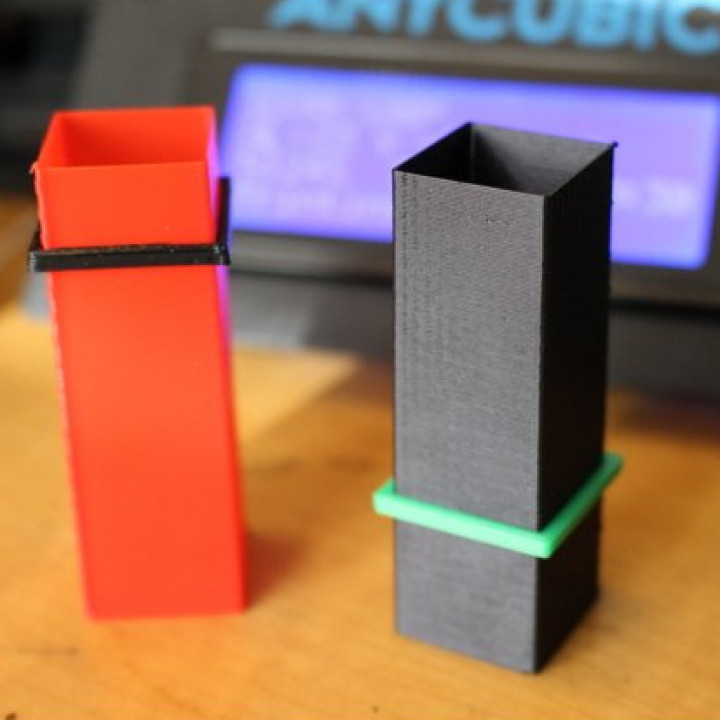
Super Fast Compensation Test
myminifactory
Super Fast Compensation Test A tolerance or compensation test allows you to determine how much your printer is inaccurate, so that you can design around that, or only print parts with this in mind. They also serve as a feeler gauge for contemplating different fits. This is the most elegant compensation test you will ever see! It's a one-of-a-kind gauge that relies on a slight taper. This design foregoes the typical binary go and no-go style, and gives us powerful results. It prints very fast relative to other gauges, requiring very little filament, yet it still gives full range from 0 mm to 1 mm, plus fine decimals! Never pile up bulky go/no-go tests again! It also makes an attractive ornament when finished. Technical Specifications The larger tower bottom has a length and width of 20 mm, and gently tapers to 19 MM over 60 MM in height. How to Print Print tower using a spiralized contour, otherwise known as "vase mode." Print ring normally. How to Use To perform the test, the ring is gently slid onto the tower to see how far the ring can travel before stopping itself. Measure the distance (in millimeters) left from the bottom of the ring to the bottom of the tower. Multiply that distance by (1/60) or 0.0167 The result should typically be a number between 0.15 and 0.6, which is the amount in MM your printer must be compensated for in your future designs. Although if you are using the smaller tower, ranges up to .35 are available. For example, if the bottom of the ring was 20mm away from the bottom of the taper, you would calculate (1/60)20 or 20 x 0.0167 That would equal 0.33 MM. Therefore, in order for your printer to produce a ring which fits perfectly onto a 20mm wide square block, the ring's inner dimension must be designed to be a minimum of 20.33mm, or the block must be reduced to a maximum of 19.67mm. Tips You can vary the amount of force applied in the experiment to adjust whether the part design you are considering will be a snug or loose fit.I like to find both a minimum and maximum compensation amount, where the high and low numbers found represent a scale of snug and loose fitting parts possibilities. You can run the test several times and find the average, if you are so inclined. Once you typically fall under a specific compensation, you can cancel the print mid way to save even more time and filament! Additional tests may be ran to determine compensation requirements for different speeds, temperatures, and more! Disclaimer Creative Commons License - Attribution
With this file you will be able to print Super Fast Compensation Test with your 3D printer. Click on the button and save the file on your computer to work, edit or customize your design. You can also find more 3D designs for printers on Super Fast Compensation Test.
